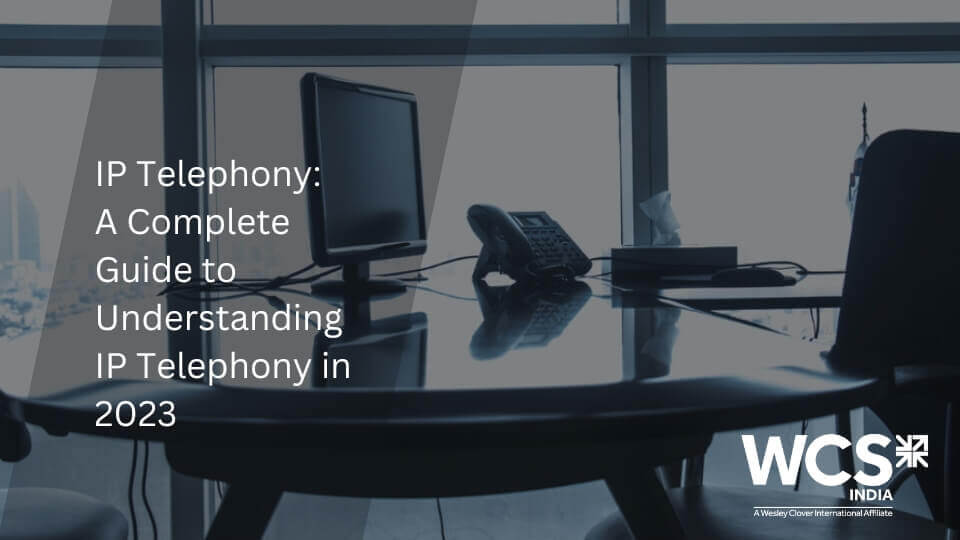A to Z Unified Communications Glossary

We are living in times when technological advancements and innovations are continuously coming to the forefront. No doubt, Unified Communications (UC) have proved a bliss for business organizations to keep their people, their partners, and their clients, closely intact.
However, there are some commonly used terms in UC that everyone must be aware of. Let us have a look at the complete Unified Communications Glossary and have a better understanding of the terms.
A
API: Application Programming Interface is the set of procedures after which an application can access data and features of a computer system.
Asynchronous Communication: Communication between two users who aren’t simultaneously available to chat or connect. Message sent from one end is viewed at the other end after some time lag.
ATA: Analog Telephone Adaptor connects the telephone to a computer so that calls could be made over the Internet.
Automated attendant: With an automated attendant you can customize the way calls get routed to their destination. It is faster and easier as it won’t require any human interference after set-up.
B
BYOD: It implies Bring Your Own Device which refers to the employees bringing their personally owned devices such as smartphones, tablets, and laptops, to the workplace to access information and apps for communication and collaboration.
C
CAC: It expands for Call Admission Control. By managing bandwidth allocation of services, it is a practice to avoid network congestion and any degradation in voice quality for VoIP calls across the IP network.
Capex: Capital expenses cover every equipment requirement, installation, set-up, etc. It is similar to a one-time spend that goes on for years.
CEBP: Communications-enabled Business Processes are the integration of business and communications applications to improve and speed up workflow.
Cloud Calling: Calls are placed through the internet rather than a landline. A third-party host is responsible for providing the user with telephony services or VoIP
Cloud Communications: Call and data communication services are available to the organization but hosted by a third party over the cloud.
Collaboration: Bringing clients, vendors, partners, and employees with various solutions for real-time communications and the ability to share files and documents with them is collaboration.
CPaaS: Communication Platform as a Service allows users to add communication tools to their existing real-time communication applications.
CRM: Customer Relationship Management is a software that lets you monitor your organization’s interaction with its customers and clients.
CTI: Computer Technology Integration refers to the digital ability to integrate computer and telephone interaction.
D
DID: Direct Inward Dialing allows external callers to directly contact the user at their unique number in call routing.
E
EIM: It stands for Enterprise Instant Messaging. There are organizations that use private IM servers for Instant Messaging services and the service becomes Enterprise Instant Messaging.
F
FMC: Fixed Mobile Convergence refers to the solutions where cellular services are integrated with private communications networks.
H
Hosted Services: When an organization takes IT services such as email, UC, and IM, over the internet from a remote location, rather than running their servers at the site, it is called hosted services.
I
IP-PBX: It expands for IP-based Private Branch Exchange. It is a telephone switching system within the enterprise that delivers voice or video over a data network using IP.
J
Jitter: In telecommunications, a jitter is a deviation and undesirable interference in the transmission of data across the network. It is responsible for the degradation of voice quality.
L
Latency: It is the time taken for a packet of data to travel from one application to another. It includes the time of transit across the network and the time needed to prepare and process data at the sending and receiving ends.
Leased lines: These are the most private WAN connections that can be used to share voice, data, and Internet services. Leased lines are directly connected between your locations.
Free Download: Learn how to make your business communications effective and borderless with our UCC solutions.
O
Opex: Operational expenses refer to the capital invested for an organization’s day-to-day activity.
P
PoE: Power over Ethernet is a way to connect to the internet by connecting data cables to your computer/system.
Presence: This technology helps to determine the status and location of the users as soon as they connect to the network - whether they’re in the office or away from their desk or busy.
Q
QoS: It stands for the quality of service which means the overall performance of the service or a telephony network as observed by the users. It takes factors such as bandwidth, throughput, transmission delay, jitter, and others.
S
SBC: Session Border Controller is a network device that is used to register, set up, control, and tear down VoIP multimedia communications sessions. It is also used as a source of additional network security by barring the outside world from getting access to your user's IP addresses and making sure that only the approved traffic enters your business.
SIP: It stands for Session Initiation Protocol. It is a signaling protocol that is responsible for initiating, maintaining, modifying, and terminating real-time sessions including video, voice messaging and other communication applications between two or more endpoints in IP networks.
SIP Trunking: When the Internet Telephony Service Providers deliver telephone services and Unified Communications to the customers with SIP-based IP-PBX and unified communication facilities. It is VoIP and streaming media service based on SIP.
SLA: Service Level Agreement is a service contract or an agreement that defines the minimum level of services that a service provider will deliver to you.
Softphone: A softphone or a software telephone enables voice over Internet protocol (VoIP) telephone calls from computing devices like computers, smartphones, or tablets. They eliminate the need for dedicated hardware.
SRTP: It stands for Secure Real Time Protocol. It is a method of end-to-end encryption and authentication of data transmitted through RTP.
T
Telepresence: The set of technologies that give a feel and the effect as if the person is present there, while he or she is present at the remote location.
Trunk Lines: They connect the PBX to a public switched telephone network. In the case of cloud-based solutions, SIP trunks are put to use for this connection.
U
UC/UCaaS: Unified Communications or Unified Communications as a Service is the integration of real-time communication services (like chat, IP telephony, video conferencing, etc.) with non-real-time communication services like email, fax, voicemail, and messaging that provides a consistent user interface and experience across multiple devices.
Unified Messaging: When voicemails, emails, faxes, and all different types of messages are stored in the same message store and the users have access to them from the same mailbox from different locations and applications, it is called unified messaging.
V
VoIP: It stands for Voice over Internet protocol which means that voice signals are transmitted through the medium of the internet. It ensures improved call quality over traditional POTS lines, at significantly lower costs.
VoIM: It stands for Voice over Instant Messaging. It refers to the applications which enable user voice communications along with text-based Instant messaging.
Video Conferencing: A method of bringing people, dispersed in variously different locations on a single screen, for communicating, interacting, and collaborating with them over video is video conferencing.
Virtual Team: It refers to a group of people who are dispersed in different time zones and locations and must work together with the help of various communication and collaboration technologies.
VMR Software: Virtual Meeting Rooms are the digital version of conference rooms; users can conduct online meetings using such software.
VPN: Virtual Private Network means a private network is extended across a public network or the Internet. It implies that one can share data more securely and protectively across public networks.
W
Web Collaboration: It is an act of real time-sharing of content, files, documents, and whiteboarding with multiple users, across the internet.
Webinar: It is an online seminar where various participants can join. The host conducts the seminar and adds other people by sharing web links with them.
WebRTC: It stands for web real-time communications which enable browser-to-browser communication applications like voice or video calls, and file or document sharing without the need for additional software or plug-ins.





